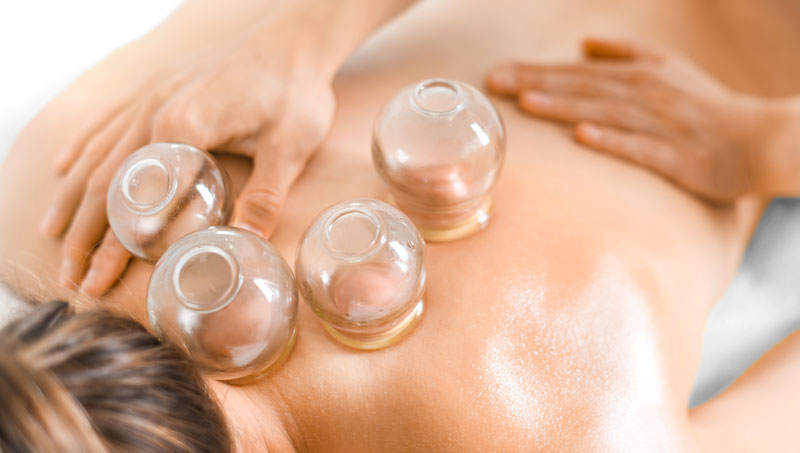What is cupping?
Cupping dates back thousands of years in East Asian cultures, but is fairly new in Western cultures, so there is a lot of mystery surrounding the treatments.
Usually a practitioner will administer cupping using glass, plastic, silicone, or bamboo cups. The cups are applied using either a suction method, or the traditional method known as fire cupping. Fire cupping uses a cotton ball soaked in alcohol which is then set on fire and placed inside the cup. The cup is quickly placed on your skin so the heat from the flame can create a vacuum, allowing blood vessels to expand. Cups may be applied for approximately 3 to 15 minutes.
What is cupping good for?
Cupping is administered for many reasons, but here are a few conditions and benefits of cupping:
- Diminishes Pain
- Reduces inflammation
- Increases blood flow
- Allows for relaxation
Cupping is primarily used as a preventative therapy.
Cupping Marks
What are those bruises, you ask? Cupping marks are not bruising, bruises also hurt when touched, unlike cupping marks. The marks may last from a few minutes to a few weeks, depending on the conditions.
Cupping, on the other hand, pulls up old non-circulating stagnant blood and sticky, viscous toxins and fluids from past illnesses and injuries. It brings them to the surface where the lymph system will expel the toxins and pathogens. This makes room for new, healthy, restorative circulation of nutrient rich blood and oxygen to the area to help reduce pain and inflammation, and speed up recovery time.
Cupping Colors
What do the different colors of the cupping marks mean, you ask? A variety of color marks are your body’s reaction to cupping. Cupping treatments don’t always leave marks, but the various gradients of color represent different diagnostic information useful to the practitioner.
Cupping Therapy at Total Health
CLICK HERE TO LEARN MORE ABOUT CUPPING
1. Complement Ther Med 2018 Feb;36:25-29.doi: 10.1016/j.ctim.2017.11.002.Epub 2017 Nov 14.
